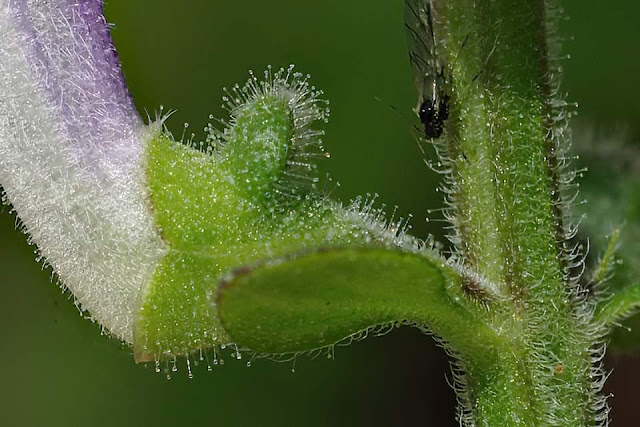Hairy skullcap (Scutellaria elliptica) is one of 13 native members of this very widespread genus. This species has a limited distribution in Florida - occurring only in 11 north Florida counties, but occurs widely north of us throughout much of the Midwest and from east Texas to Delaware and Pennsylvania across the Coastal Plain. Throughout its range, this perennial mint is found in partly shady woodland understories in a variety of soil types, often near streams, but never in poorly drained conditions.
It dies back to the ground in winter and reemerges again in early spring. It reaches its mature height of 2.5 feet by late spring and the flowers appear by early summer. They are typical for the genus. The purple and blue flowers bloom from May to July in a 4-inch long raceme. Individual flowers are up to 3/4 inches long and 2-lipped with the upper one hooded and the lower one having white blotches. The calyx has long, spreading glandular hairs.
Hairy skullcap gets its common name from its distinctive foliage. The green leaves are 1.5-3 inches long and 3/4 to 1.5 inches wide. Margins are crenate to serrate, the shape is lanceolate-oblong to oval, the base is rounded to broadly wedge-shaped (cuneate) and the tip is blunt. The underside of the leaf is paler with hairs. The upper surface is dotted with glands. These are quite visible in the photos above.
Skullcaps are hosts for several species of moths and they are of special interest to bees that can squeeze into the hooded blooms. Despite the fact that this genus contains a great many ornamental and easy to grow wildflowers, only a few of Florida's native species are currently available commercially. Hairy skullcap is not one of them. It is rarely offered by native nurseries outside of Florida.
These photos were taken by my friend, Floyd Griffith, and used by permission.




No comments:
Post a Comment
Please let me know if this site and the various postings have been useful to you.